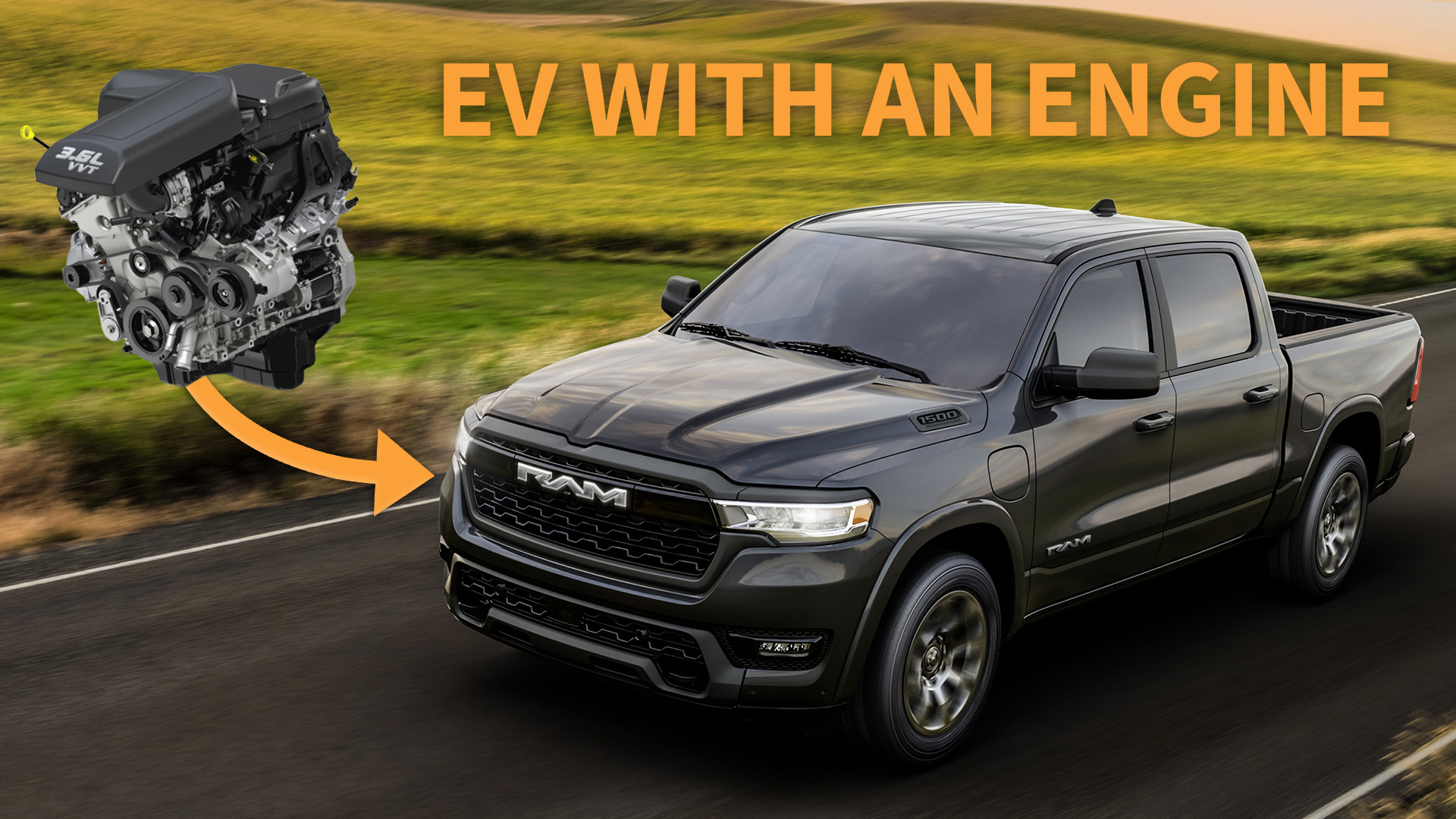

Ram pulled the covers off its electric half-ton truck, the Ram 1500 REV, back in April. It promised big power: 654 horse and 620 pound-feet of torque, as well as big range at 500 miles. It was announced simultaneously that another electric truck with a gasoline range extender would follow it, and presumably, it would go even further between stops. Enter the Ramcharger, a 690-mile EV that gets its charge from a 3.6-liter Pentastar V6.
The gasoline engine isn’t connected to the wheels whatsoever. Instead, it powers a 130-kilowatt generator, which sends electricity to the truck’s front and rear drive modules. Each of the modules houses an inverter, gearbox, and motor to spin the wheels. The output is impressive at 663 hp and 615 lb-ft of torque, but none comes from the V6.

I’m not sure what power plant I expected it to have, but it wasn’t that. I mean, it’s the base engine for the regular gas-only truck. Maybe they were worried about what people would say if they stuck a four-cylinder under the hood. Macho brand Ram would probably use a V8 before something puny like that.
Think about it a little deeper, though, and you’ll find it is the most logical option. It doesn’t have to be the most powerful engine. Because it runs at constant, relatively low revs, a turbocharger would be a waste. It’s also a heck of a lot simpler to use an existing engine than it is to develop a totally new one like Mazda did with the rotary in the MX-30.
That’s where the business logic comes in, too. Stellantis uses the Pentastar V6 in many applications, from the regular Ram 1500 to the Jeep Wrangler, Gladiator, Grand Cherokee, and way more. Why engineer something else when these things practically grow on trees? The 3.6-liter has been in service since 2010. Ram knows it works.



Presumably, since the engine is under-stressed in this application with essentially every component doing less, it’ll also last a long time.
“Obviously, the use model is different than a plug-in [hybrid],” explained Joe Tolkacz, lead propulsion engineer for the Ramcharger. “There’s no mechanical linkage to the transmission so you don’t have losses there. As a result, you don’t have some of the ancillary parts like dust covers for the transmission. We took out the starter because you don’t need that. We can use the generator to start the engine.”
In short, the Ramcharger uses a big V6 because it’s the best option available right now. As battery technology and infrastructure improve, there may be no need for a truck like this to exist beyond this decade. If that’s the case, there’s no sense in reinventing the wheel.
The Pentastar engine just keeps on keepin’ on.
Got a tip or question for the author? Contact them directly: caleb@thedrive.com